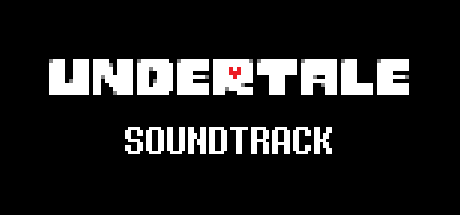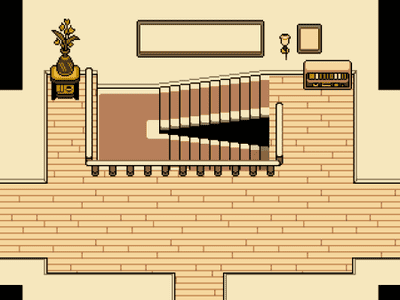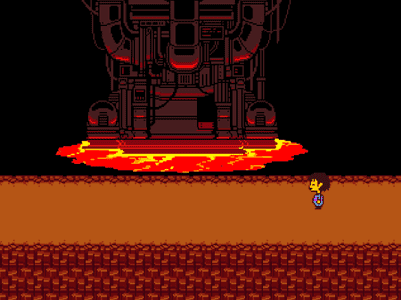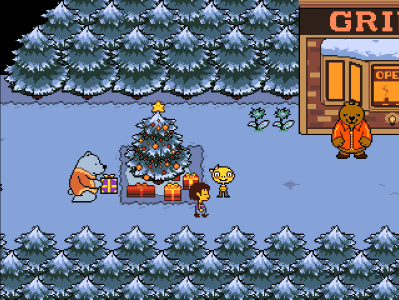Trending
Opinion: How will Project 2025 impact game developers?
The Heritage Foundation's manifesto for the possible next administration could do great harm to many, including large portions of the game development community.

Featured Blog | This community-written post highlights the best of what the game industry has to offer. Read more like it on the Game Developer Blogs or learn how to Submit Your Own Blog Post
This is the 1st half of a 2-part article on leitmotifs in UNDERTALE and how they inform the narrative and enhance one's experience with the game.


Original post here: http://jasonyu.me/undertale-part-1/
By @jasonmyu
---
This is the 1st half of a 2-part article on leitmotifs in UNDERTALE and how they inform the narrative.
---
Introduction:
UNDERTALE is an indie role-playing game that released earlier this year in September, and has quickly become one of my favorite games of all time. The soundtrack is easily one of my favorite works of music, ever. If you haven't played UNDERTALE yet, I highly urge you to do so. In fact, if you haven't played or finished all of the game, this article will make very little sense and will contain many spoilers, so there's not much reason to keep reading. Turn back now.
For those of you who have played the game, there's not much else to be said. You know what's up. Let's take a closer look at one of the best video game soundtracks of all time.
---
On Reading Music for Non-Musicians:
Throughout this article I use written (scored) examples to illustrate certain patterns and themes that occur in the soundtrack. I realize that many people are not able to read music---but luckily I think musical notation is actually intuitive enough that being able to see the contour of a phrase is enough to get my points across. If you don't know what I mean, just remember this: when notes move upwards on the staff, they move up in pitch, and when notes move downwards on the staff, they move down in pitch. If you can just keep that simple idea in mind, I think you will be surprised at how easily you can follow along with the music.
(Lastly, all of my notation was done in C Maj/A min for ease of reading...apologies to my perfect-pitch readers.)
---
On Leitmotifs:
To quote Wikipedia: "A leitmotif is a short, constantly recurring musical phrase associated with a particular person, place, or idea." Perhaps the best example of this in popular culture is in Star Wars---when the Imperial March plays, you know Darth Vader is going to show up. The Imperial March is a leitmotif that is associated with the character of Darth Vader.
UNDERTALE is full of leitmotifs that fit all 3 definition types. There are leitmotifs that refer to certain characters, certain areas of the game, and larger ideas and themes that run through the game as a whole. My goal with this article is to show the different ways leitmotifs are used in UNDERTALE, how they affect one's experience with the game, and how a game soundtrack can do much, much more than just provide catchy background music.
---
Leitmotif to Elicit A Feeling of "Home": The Undertale Theme

Though most video game soundtracks have a variety of memorable melodies, there's always only one we can call the "Theme" of the game. Mario, Zelda, Pokemon---despite the huge variety of music associated with these games, we all know what the Main Theme for each of those franchises are. In UNDERTALE, the Main Theme is this:
001. Once Upon a Time
Undertale Theme at 0:00:
Like many great motifs, its strength lies in its simplicity and mutability, which is what helps give rise all the different variations we hear in the soundtrack. In fact, this simple motif shows up as the main melody in no less than 13 tracks in the game, and makes appearances in many others.
The first example of this is actually the very next track:
002. Start Menu
Undertale Theme at 0:00:
The Start Menu music is an extremely stripped down treatment of the Undertale Theme with just the melody line and nothing else. (The chiptune instrumentation makes this track reminiscent of the old Gameboy Zelda start menus.)
Though it's only two tracks, at this point most experienced players will have subconsciously or consciously identified the Main Theme as such. That moment of identification is important because it creates an anchor in the player's mind---the Undertale Theme is now a familiar tune in a world of potentially new and different and scary possibilities. As a result, when you hear the Main Theme again, all of the ideas and emotions associated with that theme are brought back and re-purposed in the new context.
In UNDERTALE, the Main Theme is used to elicit a sense of home and safety, and to serve as checkpoints for the player at critical points in the game.
012. Home / 013. Home (Music Box)
Undertale Theme at 0:37:
This is the first time the Main Theme appears once you've actually started the game. It makes sense from a narrative point of view---you've just been traumatized by Flowey, you've wandered through the Ruins, and now, finally, you've found a safe place. Again, whether the recognition of the theme is conscious or subconscious, the return of the Undertale Theme here reinforces the feeling of familiarity in contrast with all of the new experiences the player has just had. The gentle guitar treatment of the theme and the soft yellow palette of the area reinforce the feeling of safety.
After Home, the Undertale Theme disappears for quite a while until near the end of the game:
054. Hotel
Undertale Theme at 0:20:
055. Can You Really Call This A Hotel, I Didn't Receive A Mint On My Pillow Or Anything
Undertale Theme at 0:15:
Though technically "Hotel" first plays during the Mettaton cooking show, the area where we mainly hear this tune is in the hotel before the Core. Though it's not quite the comfort of Home, the hotel is nevertheless immediately recognized as a "safe place" that you've arrived at after a great deal of wandering through dangerous territory (Hotland in this case). And of course, the obvious choice for instrumentation and style here is Muzak.
There's a cool bit of mirroring here with where 012. Home and 054. Hotel happen to be in the game: the two places where we hear the Undertale Theme are right AFTER Ruins, the first area, and right BEFORE the Core, the last area. [Think about the enemies in the Ruins (Froggit, Whimsun, Loox) vs the Core (Final Froggit, Whimsalot, Astigmatism).]
Then, of course, there's the recapitulation of 012. Home with 071. Undertale in New Home. As everything after the Long Elevator I consider "Endgame," we'll devote a whole section to that in Part 2.
071. Undertale
Undertale Theme at 0:37:
Don't you immediately feel at home?
---
Leitmotif as Structural Markers, Establishing Continuity, and World Building

In most games, but especially in RPGs, music tracks are often separated into their functions: music for a location, music for a character, music for random encounters. When done well, the music that serves a specific game element (locale, character, etc.) accurately represents the look and feel of that element, and as players we quickly learn to associate a piece of music with its corresponding area. For many games, this means that you get a variety of music in wildly different styles because generally games (or at least RPGs in this style) want to create distinct areas of the game, each with their own flavor. Take, for instance, the difference between two Overworld tracks in Chrono Trigger:
Wind Scene (600 A.D.)
Ruined World (2300 A.D.)
UNDERTALE's soundtrack is no different in its goals---but what makes UNDERTALE so interesting is that despite the variety of music in the soundtrack, the actual amount of musical material is astonishingly economical.
Sometimes in a game you'll come to a new area and be jarred by the "newness" of everything---a good example that comes to mind is when you first enter Gerudo Valley in Ocarina of Time. The music for Gerudo Valley is so different stylistically from almost everything else in the game up to that point (suddenly Spanish guitar, after almost exclusively orchestral instrumentation) that you're immediately alerted to the fact that you've just entered a new area.
Playing through UNDERTALE, you get the sense that although you are traveling through different environments, you're still in the same world you started in. Part of that is no doubt due to the fact that the game is short, but I think that there are just enough subtle hints in the soundtrack to make a listener go "oh, this is different, but also familiar...it makes sense that I'm hearing this."
In this section, we'll look at the various areas of the game and their backing tracks, and how they relate and reinforce a sense of structure and continuity.
005. Ruins
Overworld Ostinato at 0:00:
Ruins Melody at 0:05:
This track marks the real beginning of the game. It's the first piece of real background music rather than music tied to a specific event, and musically, it contains motifs that we will see again and again throughout the game.
Ruins opens with two piano lines in counterpoint---the first line, which we'll call the Overworld Ostinato, comes in at 0:00. An Ostinato is simply a continually repeated musical phrase, and I'm calling this one the Overworld Ostinato because as you'll see, it works its way through many of the "background" tracks as the repeating musical pattern over which the main melodies of each area are written. Again, the simplicity of the phrase helps give rise to all the different variations we'll hear later on.
The second melody comes in soon after the statement of the first motif, at 0:05. We'll call this the Ruins Melody. It's an immediately memorable, beautiful melody, and one we'll hear again in many forms.
Let's look at the Overworld Ostinato and its development through the game first.
---
The Overworld Ostinato
Unlike many of the other leitmotifs we're talking about, the Overworld Ostinato is not what you would call a "melody." Rather, the Ostinato provides a backdrop on which melodies are painted. For this reason, I think this is an often overlooked motif as far as the soundtrack goes, which makes tracing it through the soundtrack a particularly fun exercise.
Without getting too music theory-y, let's examine the features of this motif:

Rhythmically, the motif is split into two 3-note groups. The first 3-note group in red outline the Tonic chord, or "Home Key," of the motif. It's the musical equivalent of a "You Are Here" symbol---it lets the listener know what key they're in, where "do-re-mi" is, where the music can be expected to start, and where it can be expected to end. Let's call this first 3-note group "Establishing Home."
The second 3-note group in blue let's call "The Rising Three." The most important thing to note about this figure is its rising "1-2-3" shape. It's a little motif that will alert the listener to the presence of this Ostinato again and again throughout the soundtrack.
Now let's listen to the beginning of 031. Waterfall up to 0:13:
031. Waterfall
Do you hear it? The motif has been expanded on and fleshed out but the basic structure is actually all there. If we look at the Ostinato for Waterfall it written out it becomes apparent that it's just a decorated version of the Overworld Ostinato:

There are lot more notes than before, yes. But if we actually look at the first set of red notes, it's really just the "Establishing Home" figure with notes moved up or down an octave. Then, at 0:04, the set of blue notes are "The Rising Three!". This is especially apparent if you're just listening---the 3-note rising motif jumps out at you because 1) the motif comes right after a jump in the melody---the sudden pitch change alerts your ear and 2) the 3-note motif is the highest point, pitch-wise, in the Ostinato, which means it will naturally make its way out of the mix.
But maybe this is just wishful pattern cherry picking and coincidence. I would consider that a possibility, until we look at the Ostinato figure for Hotland.
051. Another Medium
Overworld Ostinato at 0:00 to 0:07:
If you didn't hear it the first time, it should be more apparent now---that 3-note motif is frantically waving its flag! Let's look at the Hotland Ostinato written out:

Again, we see the "Establishing Home" figure in first half of the phrase, and then in the 2nd half, "The Rising Three." And again, for the same reasons, we hear that particular 3-note rising figure better than any other part of the Ostinato.
At this point, it only makes sense that it would be in the track for the Core as well.
065. Core
Overworld Ostinato at 0:06:
And here is the Ostinato written out---it's actually almost identical to the Hotland Ostinato:

So what's the goal with all of this? Of course, writing music like this saves the composer some time---rather than having to come up with new ideas for every track, he can use and reuse musical ideas. For the listener, it gives structure and a sense that you are really listening to one large work of music rather than small disparate pieces. This is how composers like Beethoven keep listeners' attention throughout a 40 minute symphony---by using and reusing musical ideas in different variations, instrumentations, harmonies, etc.
In the context of a game, it gives the player a sense that all these areas are connected, rather than just disparate parts. It's satisfying, both from a gameplay and music standpoint, that all the "loose ends" are tied up and neatly packaged into a single coherent work---which is what the Ostinato does by tying the 4 areas of the game together.
---
If the Overworld Ostinato's purpose is to create a constant, familiar backdrop of music, then the goal of melodies of each region is to illustrate progression. Specifically, the way melodies are used in the 4 areas of the game suggest that the structure of the game is split into two thematic halves.
Let's go back to the Ruins:

005. Ruins
Ruins Melody at 0:05:
Melodies, unlike Ostinatos, are naturally full of features that we can intuitively latch on to and recognize in various forms. (If you've played the game you can probably already hum the entire Ruins melody from memory.) What that also means is that melodic variations are easy to notice and catch. Let's see how this original Ruins melody makes its way through the game.
031. Waterfall
Ruins Melody at 0:27:
FROM:
The Ruins Melody comes in at 0:27, slowed down compared to the original, but starts out the exact same way. The way the melody modulates halfway through the melody differs from Ruins, but the general contour of the phrase and rhythmic profile remains the same.
033. Quiet Water
Ruins Melody at 0:07:
FROM:
033. Quiet Water is a further branch of the Waterfall track, slowing down the melody even more and simplifying the rhythm.
---
At this point, the Ruins melody mostly disappears as the main melody of any track until the Endgame. A natural question one may ask, especially since we've seen the trajectory of the Overworld Ostinato, is, "why isn't the Ruins Melody in Hotland or the Core?"
That question is answered by looking at the last place the Ruins Melody appears before the Endgame...
045. NGAHHH!! / 046. Spear of Justice
Ruins Melody at 0:34:
FROM: (Ruins)
(Ruins)
+ (Waterfall)
(Waterfall)
Maybe you'd already guessed it---the Ruins Melody makes its last appearance in the Undyne fight and is a part of her battle theme because she represents the end of the first half of the game, the half with Ruins and Waterfall. The way it's implemented is particularly clever in that it incorporates the notes from the Waterfall version but the rhythmic profile of the Ruins version. This is the last hurrah for the Ruins Melody, and appropriately, once you defeat Undyne, you don't hear this melody again until the Endgame.
(There's a lot more to Undyne's Theme than just this, but we'll get to that in Part 2!)
---

Now let's look at the way the melodic lines in Hotland evolve through its progression through the second half of the game. This time, there's more than just one melodic line to follow. Let's trace them through one at a time:
051. Another Medium
Hotland Melody 1A at 0:23:
Hotland Melody 1B at 0:37:
This first melody we're looking at comes in at 0:23. It ascends slowly into view, a beautiful, haunting melody, setting the stage for the entrance of the higher countermelody that comes in at 0:37, when the song really kicks in.
065. CORE
Hotland Melody 1A at 1:02:
In 065. CORE, we see the same slow, winding melody come in at 1:02.
Now, if the Ruins Melody was closed out by the Undyne Fight, it would only make sense that the themes in Hotland and the Core would be closed out by Mettaton. Let's take a look:
068. Death by Glamour
Hotland Melody 1B at 0:14:
FROM:
We hear the return of the countermelody (Melody 1B) from Hotland at 0:14, modified, but still recognizable, as part of the introduction of 068. Death by Glamour. Again, this makes sense that Mettaton, the boss for this second half of the game, would contain the shared melody that runs through Hotland and Mettaton. He is "closing out" this Hotland melody in the same way Undyne did with the Ruins Melody.
Now let's look at the second melody that runs through Hotland and the Core:
051. Another Medium
Hotland Melody 2 at 0:52:
The second melodic line is the opposite of the first melody we looked at above---it's aggressive, strong, and rhythmically driven. Unlike the shy, string-like instrumentation of the first melody, this melody belongs to a rough, aggressive synth that we can hear immediately when it comes in.
065. CORE
Hotland Melody 2 at 0:35:
FROM:
Of course, the melody shows up in the music for the Core as well, mostly unchanged from to the Hotland version. However, this melody doesn't show up in the Mettaton fight (which honestly is already packed with different motifs and patterns)---but I think it's still worth pointing out as it illustrates the relationship between Hotland and the Core.
...Phew, I realize that was a lot of content above. To summarize:
The Overworld Ostinato runs through all 4 areas of the game. Because the Ostinato figure is a repeated pattern that serves as the "backing" for more prominent musical elements, it's often less easy to hear. Nevertheless, its presence gives listeners a sense, either subconsciously or consciously, that all the areas of the game are related and part of a unified world.
The melodies of each area are related too, except that because they're more prominent, it would perhaps be tiring to hear them through the whole game. As a result, UNDERTALE gets split, structurally, into 2 halves. The first half is Ruins and Waterfall, which share a melody, and has that melody "closed out" by the boss of the first half of the game, Undyne. The second half is Hotland and the Core, which share 2 melodies, one of which is also "closed out" by the boss of the 2nd half of the game, Mettaton. This theory that the game is split up in this way is actually further supported by the tracks 047. Ooo and 70. Long Elevator, both of which are "drone tracks" that occur right after the Undyne and Mettaton boss fights, respectively.
"But what about the whole Snowy/Snowdin area? How did that get left out of this whole section?"

It's an interesting question. If we look at it musically, Snowy/Snowdin is its own, self-contained little area. Thematically speaking, Snowy, Snowdin, the Shop Music, and the Dating Sequence all share the same leitmotif: a cute, happy little melody that represents exactly the feeling it evokes.
017. Snowy
Cheerful Theme at 0:00:
022. Snowdin Town
Cheerful Theme at 0:19:
Cheerful Theme Bridge at 0:56:
023. Shop
Cheerful Theme at 0:00:
Cheerful Theme Bridge at 0:25:
025. Dating Start!
Cheerful Theme at 0:00:
Cheerful Theme Bridge at 0:53:
(with swing)
027. Dating Fight!
Cheerful Theme at 0:00:
Cheerful Theme Bridge at 0:13:
(with swing and ornamentation)
Why, though, is this section of the game separate from the others musically? To me it seems the reason is this:
The Snow area of the game is strategically placed in the narrative to encourage the Spare mechanic.
Think about it---for most players in their first playthrough, they've probably slayed several monsters in the Ruins, having been given very little direction on how to deal with them. Most players will have also killed Toriel, and are probably feeling awful about it. Then comes the Snow area---where the bosses are cute dogs, there's a friendly town with a Christmas tree, and the music---constantly reminding you that yes, it turns out Monsters have a rich and happy (though not too happy) life here.
Thus, the leitmotif that runs through this entire area (all the way through the Papyrus Fight/Date, which again "closes" out the theme before Waterfall) is designed to get the player to fall in love with the Monsters and the world they live in, and to re-examine the way they do battle for the rest of the game. With this in mind, the way the Snow area is distinct from the other areas of the game musically makes perfect sense, and explains why the usual Ostinato figures and melodies that run through all the other areas are not present here.
---
In the next half of the article, I'll discuss character-associated leitmotifs and how those leitmotifs serve to inform those characters' personalities and relationships, as well as discuss the Endgame tracks. In the meantime, if you have questions, comments, things you agree with, things you don't quite buy...please let me know in the comments below!
Read more about:
Featured BlogsYou May Also Like